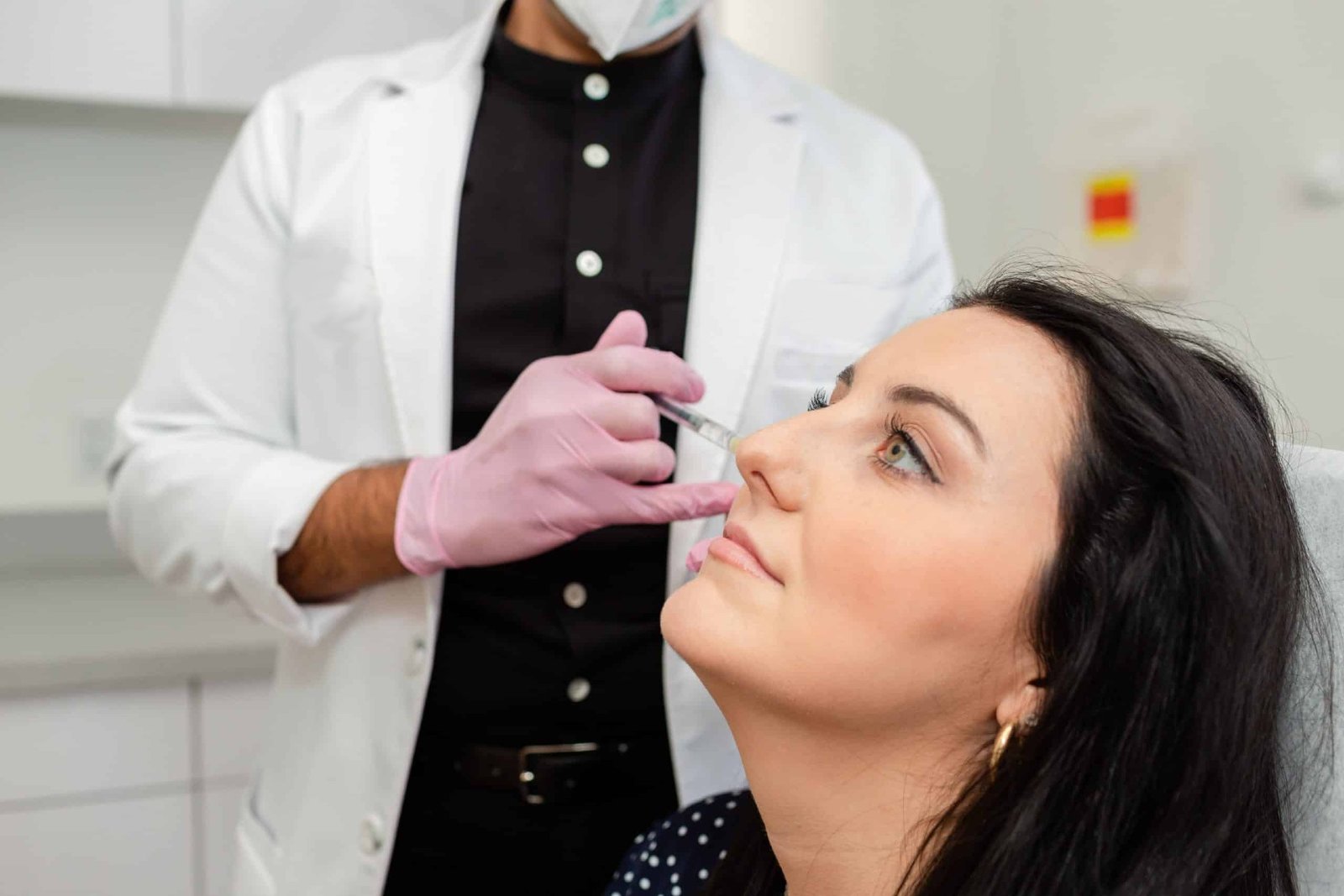
HOMEPAGE / MEDICAL DERMATOLOGY TREATMENTS /Mohs Surgery
MOHS SURGERY
TREATS:
Certain types of skin cancer
FOLLOW UP:
Routine appointments for several months
PROCEDURE TYPE:
Surgical excision
SIDE EFFECTS:
Swelling, mild discomfort, bleeding at the treatment area
HOW PERFORMED:
Thin layers of the skin are removed until healthy tissue remains
EXPECTED OUTCOME:
Removal of cancerous skin cells while preserving healthy skin
LOCATION:
Can be used on the face or body to preserve healthy skin while removing malignant tissue
PREPARATION:
Avoid medications that can increase bleeding. An anesthetic is applied to the treatment area.
ONSET:
Healing can take several weeks or months
WHAT IS MOHS SURGERY?
Mohs surgery treats skin cancer on the face and body. It is one of the most common surgical procedures performed in the United States. It is also one of the most precise methods of removing all cancerous tissue while leaving as much healthy tissue behind as possible.
The procedure was developed in the 1930s and later refined and named the Mohs technique in the 1970s. This in-office procedure can remove thin layers of malignant cells quickly and efficiently, leaving patients at peace and cancer-free. Basal cell carcinoma (BCC) and squamous cell carcinoma (SCC) are two of the most common types of skin cancers that can be effectively removed with the procedure. Mohs can also treat:
- Skin cancer with undefined borders
- Recurring skin cancer after treatment
- Skin cancers near scar tissue
- Some types of Melanoma
The procedure can be used on delicate areas, including the following:
- Scalp
- Forehead
- Eyelids
- Ears
- nose
- Lips
- Fingers
- Genital areas
WHO IS A CANDIDATE FOR MOHS SURGERY?
Patients with BCC or SCC are frequently advised to have Mohs surgery. Since this procedure targets skin cancer, candidates for Mohs surgery must have cancer confined to a particular area of the skin. For example, a patient cannot have Mohs surgery if the cancer has spread to other body parts, such as the lungs, lymph nodes, liver, bones, or brain. Patients with BCC or SCC may also be a candidate if the cancer is:
- Aggressive or in a large area
- In an area with minimal surrounding tissue, like the eyelid or scalp
- Recurring from a previous treatment

BENEFITS OF MOHS SURGERY
HOW DOES MOHS SURGERY WORK?
RECOVERY FROM MOHS SURGERY
Mohs surgery recovery can take up to 4-6 weeks for the wound to heal and approximately 6-12 months for the scar to heal. The procedure leaves an open wound on the skin, which should be covered for at least 24-48 hours post-surgery. If stitches were used, sutures should be removed one to two weeks after surgery. Patients can expect to feel tired and should plan to avoid strenuous activities for several days. Your expert dermatologists will provide post-care instructions, which can include ice packs and antibiotics to help prevent discomfort and infection.
If scarring is a concern after Mohs surgery, we also offer cosmetic treatments using lasers or RF microneedling to diminish the appearance of scars and enhance the aesthetic result.
SCHEDULE YOUR MOHS SURGERY IN NJ TODAY
Mohs surgery is an advanced treatment for skin cancer that produces the best medical and cosmetic results possible. To learn more about Mohs surgery or any of our skin cancer screening options, schedule an appointment online or contact Vital Dermatology NJ in Parsippany NJ.
MOHS SURGERY QUESTIONS & ANSWERS
NEXT, READ ABOUT

DYSPORT
Frowning, squinting, and smiling leave behind fine lines and wrinkles over time. Neuromodulators can be injected directly with a tiny needle into the muscles responsible and work by reducing crease-causing contractions.

DERMAL FILLERS
As we mature, loss of volume leads to wrinkles, prominent nasolabial folds, thinned lips, exaggerated jowls, and marionette lines. The natural deterioration of underlying bone and soft tissue leaves a hollowed, aged appearance. Fillers injected below the skin surface can correct age-related volume loss.

LASEMD
LaseMD is a fractional laser treatment that can be used to treat a variety of skin concerns. The new and improved LaseMD is a non-ablative fractional laser for rejuvenation and pigmentation from Lutronic.
